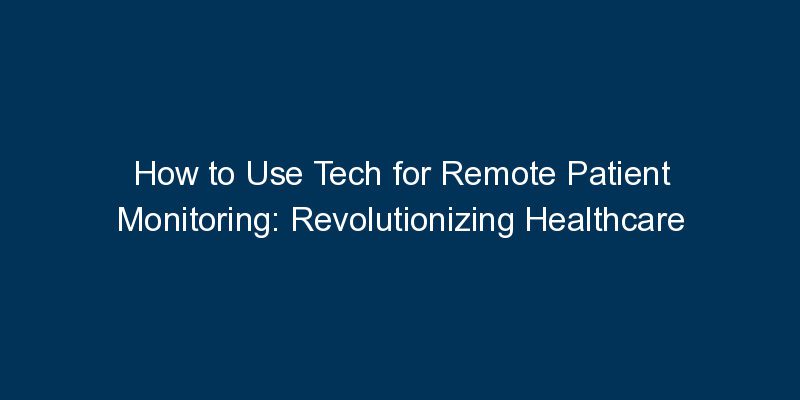Remote patient monitoring (RPM) leverages technology to monitor patients’ health outside of traditional healthcare settings. This blog provides a comprehensive guide on how to use technology for remote patient monitoring, revolutionizing healthcare delivery by enabling continuous monitoring and timely interventions.
Introduction:
Advancements in technology have paved the way for transformative changes in healthcare, and remote patient monitoring is at the forefront of this evolution. This guide explores the key steps involved in using technology for remote patient monitoring, enhancing patient care and outcomes.
Key Steps to Use Tech for Remote Patient Monitoring:
- Define Remote Monitoring Objectives: Clearly define the objectives of your remote patient monitoring program. Whether it’s managing chronic conditions, postoperative care, or preventive monitoring, understanding your goals is crucial.
- Select Remote Monitoring Technologies: Choose appropriate technologies for remote patient monitoring. This may include wearable devices, smart sensors, mobile applications, and telehealth platforms. Ensure compatibility with patients’ devices and ease of use.
- Data Security and Privacy Measures: Implement robust data security and privacy measures to safeguard patients’ health information. Comply with healthcare regulations such as HIPAA (Health Insurance Portability and Accountability Act) to ensure patient confidentiality.
- Integration with Electronic Health Records (EHR): Integrate remote monitoring data seamlessly with electronic health records (EHR) systems. This ensures that healthcare providers have a comprehensive view of patients’ health histories and real-time monitoring data.
- Patient Education and Onboarding: Provide thorough education and onboarding for patients using remote monitoring technologies. Ensure that patients understand how to use the devices, interpret data, and communicate effectively with healthcare providers.
- Alerts and Intervention Protocols: Set up alerts and intervention protocols based on monitored data. Define thresholds for vital signs and other health parameters, and establish clear protocols for healthcare professionals to intervene in case of anomalies.
Conclusion:
Using technology for remote patient monitoring is a paradigm shift in healthcare, offering continuous monitoring and personalized care beyond traditional clinical settings. By following the steps outlined in this guide, healthcare providers can harness the power of technology to enhance patient outcomes and bring about a positive impact on the overall healthcare landscape.






















Comments